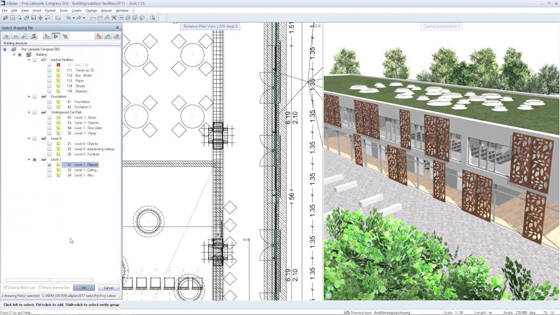Allplan introduces Allplan Architecture 2017 & Alllan Engineering 2017
Tweet
Allplan introduces new software series like Allplan Architecture 2017 & Allplan Engineering 2017 for the engineers and architects communities.
With Allplan 2017 software, the users can experience completely digitized operation. Allplan 2017 integrates BIM technology to improve the workflow of engineers and architects.
Given below some exclusive features of the software :-
Sets New Standards in the Area of Collaboration with Design Partners
Task Board for Efficient Task Management: Allplan 2017 facilitates the users to distribute the several tasks perfectly to all the project stakeholders and track them easily through the Task Board feature. The task board is directly associated with the open BIM platform, bim+. With bim+, it becomes easier to collate, view, evaluate, and distribute model data from Allplan and other OpenBIM solutions. The BIM Coordinator will be able to quickly identify ill-defined situations or design errors with the help of a visual check and allocate any problem to an editor. Throughout the collaboration amid bim+ and Allplan, any new to-dos are instantly demonstrated on both sides. As soon as the task is finished, the status is set to "Done" and the revised model is uploaded to bim+ again. All the project stakeholders then get access to the new design status instantly.
Collision Check via bim+:
To find out design errors at the initial phase, the users can carry out a collision check with bim+, for example among the partial models of the architects, structural designers, and building service providers. In the collaboration among bim+ and Allplan, the tasks for removing collisions are assigned perfectly to the obligated editor through the Task Board. Once a new design status is accessible, it can be recognized as a new adjustment with a trackable history.

Various updations in the Field of 3D Modeling:
Because of the combined parasolid modeling kernel, the users can access a slew of new options. As for instance, 3D solids, devoid of any previous polygonization, are easily & efficiently revised. The system facilitates the editing of random points, straight or curved edges and the surfaces of 3D elements. Besides, the user-friendliness and the workflows in 3D modeling are completely optimized at different levels.
User-Defined Free-Form Components Now Even More Flexible:
Parasolid-based 3D solids now will be transformed into user-defined free-form components (quantity solids). These user-defined components are altered in flexible and easy manner with the general rectifications like Boolean operations or point modification. It is also easier to describe and modify the outline presentation.
Gallery
Feel free to contact us for BIM requirements. One of our representative will respond you within 24 Hours. Send us your projects requirement today and grow your project.
Explore More !







